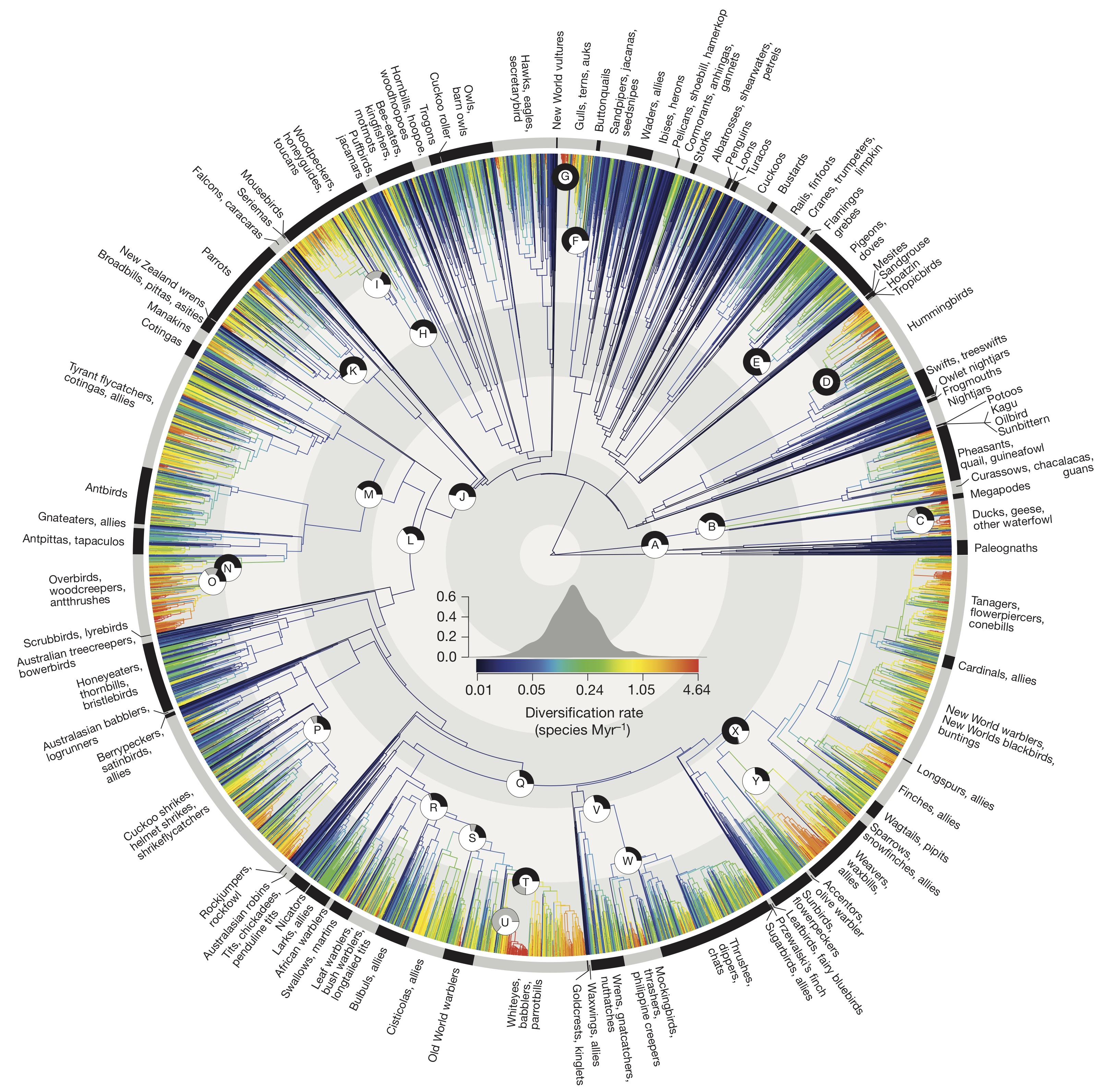Birds
The global diversity of birds in space and time
Jetz, W., G. H. Thomas, J. B. Joy, K. Hartmann, and A. O. Mooers
Nature 2012, 491:444–448. http://www.nature.com/nature/journal/v491/n7424/abs/nature11631.html
Download data:
Abstract: Current global patterns of biodiversity result from processes that operate over both space and time and thus require an integrated macroecological and macroevolutionary perspective. Molecular time trees have advanced our understanding of the tempo and mode of diversification and have identified remarkable adaptive radiations across the tree of life. However, incomplete joint phylogenetic and geographic sampling has limited broad-scale inference. Thus, the relative prevalence of rapid radiations and the importance of their geographic settings in shaping global biodiversity patterns remain unclear. Here we present, analyse and map the first complete dated phylogeny of all 9,993 extant species of birds, a widely studied group showing many unique adaptations. We find that birds have undergone a strong increase in diversification rate from about 50 million years ago to the near present. This acceleration is due to a number of significant rate increases, both within songbirds and within other young and mostly temperate radiations including the waterfowl, gulls and woodpeckers. Importantly, species characterized with very high past diversification rates are interspersed throughout the avian tree and across geographic space. Geographically, the major differences in diversification rates are hemispheric rather than latitudinal, with bird assemblages in Asia, North America and southern South America containing a disproportionate number of species from recent rapid radiations. The contribution of rapidly radiating lineages to both temporal diversification dynamics and spatial distributions of species diversity illustrates the benefits of an inclusive geographical and taxonomical perspective. Overall, whereas constituent clades may exhibit slowdowns, the adaptive zone into which modern birds have diversified since the Cretaceous may still offer opportunities for diversification.
Traits
EltonTraits 1.0: Species-level foraging attributes of the world’s birds and mammals
Citation: Hamish Wilman, Jonathan Belmaker, Jennifer Simpson, Carolina de la Rosa, Marcelo M. Rivadeneira, and Walter Jetz. 2014. EltonTraits 1.0: Species-level foraging attributes of the world’s birds and mammals. Ecology 95:2027. http://dx.doi.org/10.1890/13-1917.1






.svg.png)